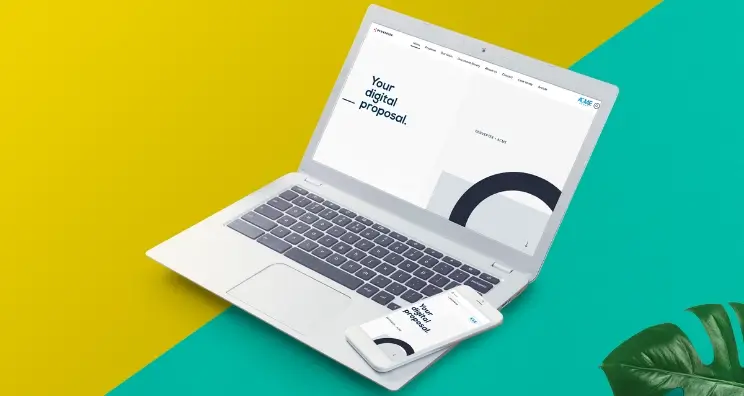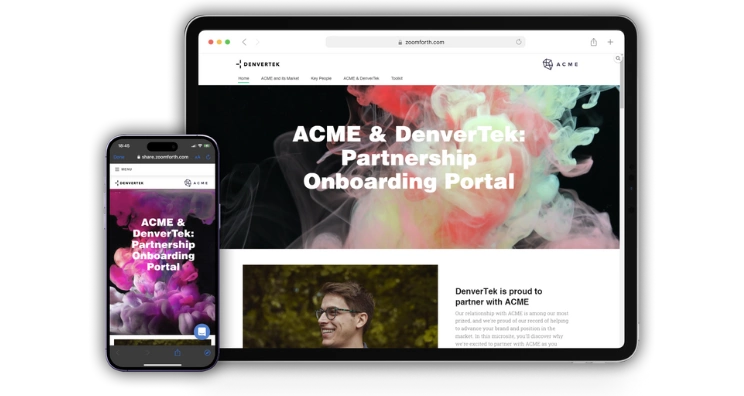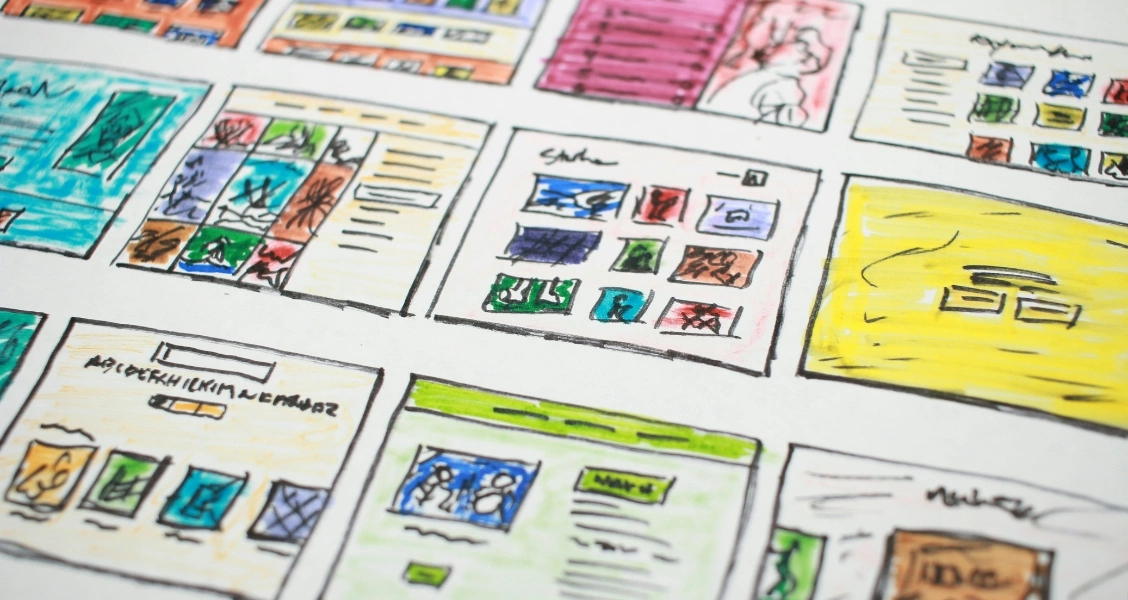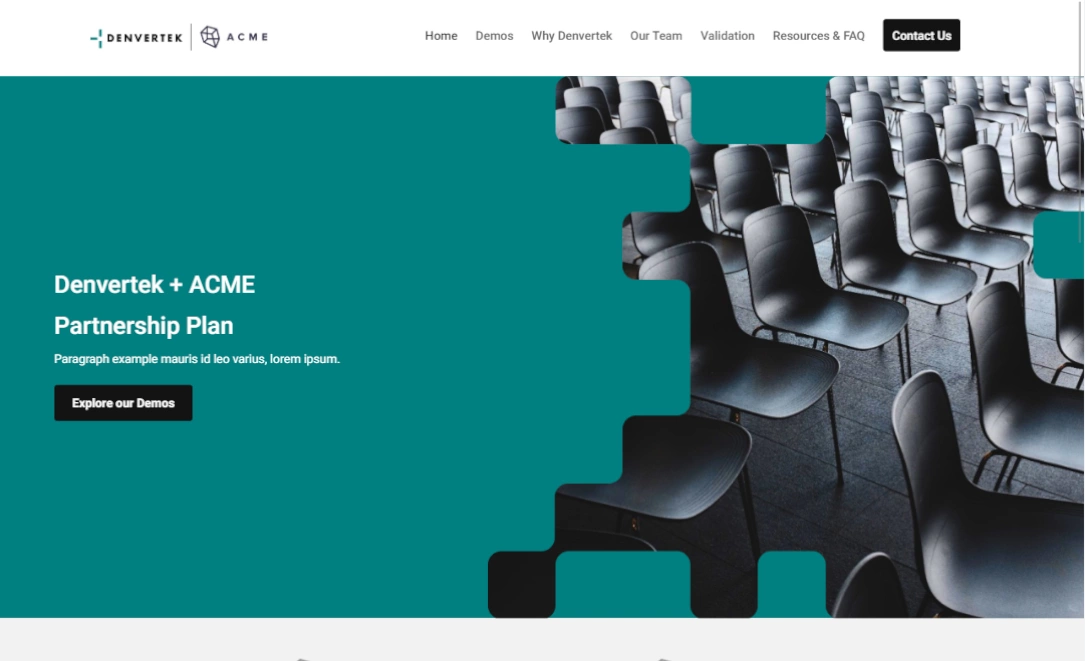Traditional pitches haven’t changed much over the past century. Meetings with clients often include a lengthy in-person presentation, bulky printed materials, multiple calls to follow up, and perhaps a group meal to seal the deal. But today, digital proposals are the modern solution for winning new business and making transactions more informational, relevant, and quick. Alas, Don Draper. We’ve gone digital.
The modern enterprise is diverse, distributed, and distracted. Businesses are rarely based in a single location and decision-makers often work across multiple time zones. In an increasingly fast-paced world, time is limited.
In the dramatically changing professional landscape, remote-friendly infrastructure is crucial to external and internal working partnerships. According to a study by Upwork, we expect that by 2028, 73% of all departments will have remote workers.
While many companies are still trying to wrap their heads around what this means as employers, we’re already there as consumers. We expect to receive information in an instant. The moment we upload a photo to Facebook, we refresh for reactions. The emails we receive in our inbox are based on our browsing history from the site we just left. And our news sources are often tailored to our mobile preference as we’re on the move.
In the world of corporate communications, this customized experience is still catching up. To be ahead of the curve, you need to ensure outdated processes—from submitting bids to emailing attachments—become digitized so the experience of your current and future clients aligns with their consumer interactions.
Defining a digital proposal
Today the most secure and personalized way to pitch a proposal to a client is with an online proposal or a microsite that can be tailored for each individual client.
Your client’s microsite should include everything in a traditional pitch, with an added focus on design and customization.
A digital proposal site typically includes:
- An overview of the proposal
- Team information
- A pitch deck that could be played as slides or video
- A document library (e.g for downloadable versions of online proposals, decks, call recordings etc.)
- Credentials / Qualifications
- Testimonials / Case Studies
- Curated thought leadership targeting your client

Creating a microsite does not require coding, design, or even website skills. A good microsite platform will feature drag-and-drop technology, allowing you to add and adjust information with a few clicks, just as you do with PowerPoint and PDFs.
Once you’ve created a microsite template that reflects your business and client interactions, you have a strong foundation for subsequent client pitches. Many microsite components – like ‘Team Bios’ or ‘About Us’ – remain static across multiple engagements, meaning there might only be a few items to adjust each time you create a proposal.
Let’s compare and contrast what your client experience might look like now versus what it could look like with a digital proposal.
Traditional client proposals
- Multiple emails with large attachments
- Multiple linked sources that can lead a client to various website articles
- A clunky experience when it’s time to track down a variety of emails and PDFs in their inbox
- A lack of security since anyone can simply hit ‘forward’ with the click of a button
Digital client proposals
- A single microsite where all assets can be found
- Downloadable documents that are easy to find, view, and print
- Analytics and data insights that enable you to better personalize and evolve your communication and content strategy based on engagement
- Secure access settings that protect your client’s information, including multi-factor authentication, password protection and more
A customized digital proposal will stand out among competitors vying for the same business, the majority of whom are lightyears behind in their pitch format.
When to use online business proposals
Your initial pitch to a client isn’t the only time you’ll want to use a microsite. This website can be your communication portal throughout the relationship.
Proposals
The most common way to elevate a digital proposal is during your bids or pre-sales. You’ll want to create this customized and modern experience for a potential client to show that you’re among the digital pioneers within your industry.
Supplementary materials
Rather than continue to email multiple PDFs or link to separate Dropbox files, you can upload additional materials for a more prescribed RFP in one place.
Client onboarding

Once you’ve landed a new client, you can create additional sites for what the process will look like, project updates for review, recording of calls and more.
Account management
A microsite can act as a repository for assets and a portal to communicate with your client.
Leave-behind materials
PDFs, spreadsheets, and other items meant to be reviewed and circulated can now all be saved and shared in one secure, accessible place.
5 ways a digital proposal pitch can increase conversions and revenue
1. Close more quickly and more smoothly
Imagine that with a single click, your audience can see everything relevant to the relationship: spreadsheets, videos from your team, graphs demonstrating your track record, bios—the list goes on. Gone are the days of sifting through email attachments, resending lost files and combing through long “reply all” email chains.
Your clients are able to access your assets more quickly, and your team can too. Rather than sending multiple emails with attachments, which can start to feel clunky, every new upload can be saved in one place.
2. Be a digital pioneer in a world of dinosaurs
Pitches created in PowerPoint and sent via email remain common, despite society’s migration toward digital. As bids are passed around an office for review, your company will stand out when potential clients view a customized website rather than a PDF attachment.
If you are able to separate your firm in the client proposal stage, you will inspire confidence in the customer that you will also rise above in your delivery, leading to increased conversion and revenue.
3. Understand your audience and cater to them
Having access to what your clients are clicking and where on a microsite they’re spending time allows you to better cater to their needs in your follow up. For example, “I noticed your team has spent a lot of time on our customer insights page. If there are any questions about it, don’t hesitate to reach out” as opposed to a generic, “Did you have any questions about the latest update we sent?”
4. Know the value of content
Microsites produce analytics that arm you with an understanding of what content is actually moving the needle. What videos are being played, what pages are being read, and how long are visitors spending reading specific articles? On the flip side, you can also understand what content is not resonating with your audience—where you’re losing click-through and which subpages lead to drop off.
Once you understand content performance, you can continue to leverage assets that are meaningful to your audience, while removing or evolving content that isn’t.
5. A cohesive brand experience
If you’re constantly unsure about whether your communications are brand compliant—if you’re using the correct shade of blue or the right serif font—a good microsite provider will have protections in place to ensure that you cannot add colors, fonts, logos, etc that break outside of what your company deems acceptable.
An effective microsite solution has templates that can be used repeatedly but can be easily customized to provide a cohesive experience for each client.
With a creative brand library in place, you’ll also save time and money by not having to hire outside contractors like designers, graphic artists or internal agencies to hand off creative assets.
Create and pitch a digital proposal with safe and secure microsites
When a client agrees to share confidential information with you, a security breach can not only be costly but can ultimately damage trust when—and if—the project progresses.
Microsites allow you to meet your company’s internal requirements in the form of data storage, login and governance settings for site creation. At the same time, you can also meet external requirements as they pertain to content visibility and site access.
Limiting your risk to security breaches builds trust and protects your firm’s reputation while avoiding regulatory issues.
A digital proposal in the form of a microsite is the key to increased conversions and a quicker close, while also improving end-to-end efficiency for both you and your clients.
Create interactive, trackable and secure sales proposals with Zoomforth.



